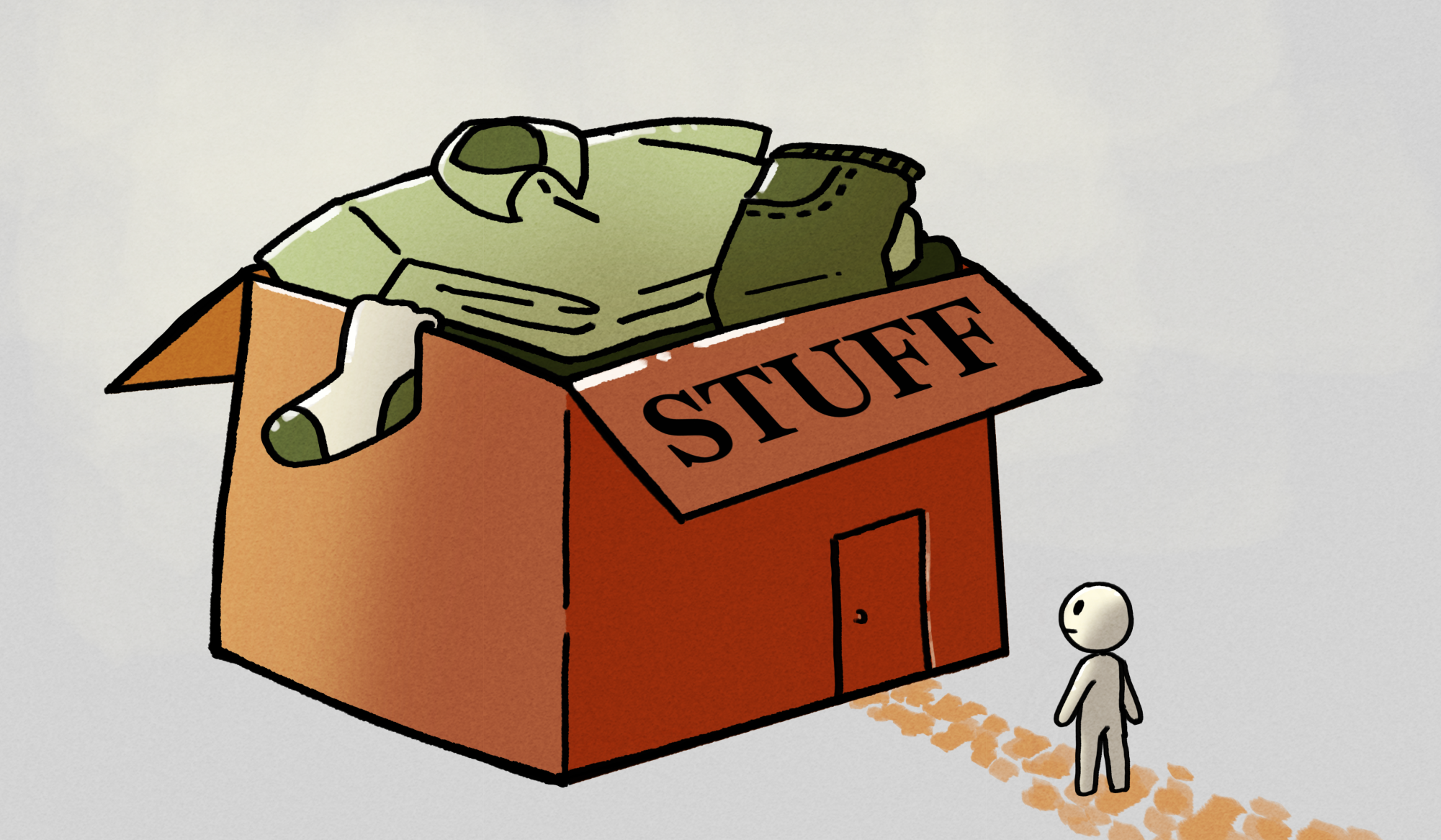If you want to be a minimalist, throw away all of your clothes — you really only need one white top, one pair of dark wash jeans, one pair of white sneakers, and one gray hoodie. Minimalism is the key to keeping the Earth sustainable, and the way to be a minimalist is fitting all of your clothes and belongings into one suitcase. To be a true minimalist master, you have to live in a tiny home and get rid of all of your “unnecessary belongings.” You can also count up all of your belongings, and if the total is under 150, then you can consider yourself an extreme minimalist! This is highly important because it keeps your carbon footprint in control and feels liberating. Sure, consuming copious amounts of electricity can also vastly increase your carbon footprint, but owning under 150 material things is really the most effective way to practice minimalism. So the next time you go to the mall and see a cute pair of Levi’s, think about the impact you’re making on the entire planet with the purchase of one item. Run out of the mall and never look back!
In today’s society, it may seem like minimalism is the only way to save our planet.
In reality, the key to reducing one’s carbon footprint is not for an individual to have less than 150 belongings. If only one person is practicing this mindset, it doesn’t create a difference. More material items are still being manufactured, contributing to additional carbon emissions. Instead of trashing your material items and creating more waste, there are other ways to recycle clothing. One can donate their older clothes that aren’t actively used to Goodwill, Salvation Army, any flea markets (Kobey’s Swap Meet is a San Diego classic), or Buffalo Exchange. Goodwill gives these clothes to those who are less fortunate, allowing them to also have clothing without the need to manufacture more. At Buffalo Exchange, clothes can be brought in and traded in for other vintage clothes or exchanged for cash. These methods are more sustainable because they stop new clothes from being manufactured and keep already existing clothes in a cycle. Other people who are more crafty tend to upcycle their clothes. They cut up their old clothes and sew them up to make new clothes. This gives the same feeling as buying new clothes except it’s environmentally sound.
So while minimalism can help keep the Earth sustainable, there are many other ways that make more of a difference in an individual’s carbon footprint than minimalism:
Reduce Food Waste
The UN Food and Agriculture Organization stated that an estimated one-third of all food produced is wasted every year. This food usually ends up in landfills where it is composted, creating enormous amounts of methane. A way to avoid this is to prepare meals for the entire week so you don’t end up shopping for more food than you are able to consume.
Reduce Electricity Usage
Electricity eats up energy and can use up to 3,000 lbs of CO2 annually. Instead, turning off the lights when you exit a room and switching to energy-saving appliances can really make a difference.
Utilizing Public Transportation
Public transportation can make a strong impact on carbon emissions. Cars emit around 57 to 322 grams of CO2 per kilometer, which can be extremely detrimental to the atmosphere. Buses emit 22 to 92 grams, and trains emit even less — between 6 and 118 grams. Choosing public transportation can help with exhaust emissions and the overall health of the earth and atmosphere.
In conclusion, consumerism is considered one of the biggest contributors to carbon emissions. Brands and companies are manufacturing copious amounts of clothes at a rapid rate. However, when working together as a community, it can be easy to keep carbon emissions in control and still maintain all of your favorite pieces of clothing. You can do this by exercising sustainable practices in other parts of your life.
Social media romanticizes minimalist lifestyles to create an aesthetically-pleasing platform, but most social media personalities who are preaching minimalism probably receive hundreds of Public Relations packages every week, defeating the entire purpose of minimalism. There is a toxic mindset associated with practicing minimalism, but rather than being minimalist or maximalist, the key is to practice everything in moderation. The overall health of the planet will benefit most when everyone is practicing moderation.










Tejas Mani • Apr 12, 2024 at 4:27 pm
Great read, learned a lot!!